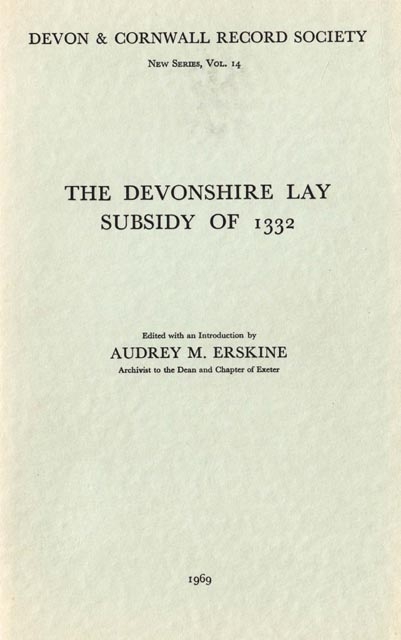INTRODUCTION
Published online by Cambridge University Press: 05 August 2023
Summary
The documents generally known as Lay Subsidy Rolls are, more precisely, the particulars of account compiled by local assessors who presented to the Exchequer the details of the sums which individual taxpayers of a single county, excluding ecclesiastics (unless they had temporal property), were to pay as their contributions to a general levy on movable goods. Though the system changed in 1334, up to that date the names of taxpayers were arranged by tithings, hamlets, vills, boroughs and ancient demesne, and each county systematically covered hundred by hundred or wapentake by wapentake. These county rolls are the fullest documents surviving from the whole taxation process of raising lay subsidies. In view of their considerable value for many aspects of local studies, a number of them have been published for individual counties. None, however, has hitherto been published for the county of Devon, and that of 1332 which is here edited is the most complete roll of the per10d surviving for that county.
LAY SUBSIDIES BEFORE 1334
It was in the late twelfth century that personal wealth which could be distinguished as movables, that is, to the exclusion of land and buildings, began to be used as a standard of tax assessment. This type of tax, commonly called a subsidy, and levied on every individual with personal property above a fixed value, unless he was specially exempt, emerged during Henry Ill's reign as an extraordinary levy, kept apart from the remainder of the royal income. However, from 1290, taxation upon movables was placed under the direct control of the Exchequer, whose officers were given charge of the oversight and collection of the taxes, which were granted by Parliament, and assessed and collected county by county. They were levied at a variable rate, such as a tenth, twentieth, sixth or fifteenth. Thus it was the business of assessors first to estimate the total value of a man's movable property, then work out the appropriate amount which he had to pay according to the fraction levied. After 1294 it became usual to levy the tax at a different rate in urban and rural areas.
- Type
- Chapter
- Information
- The Devonshire Lay Subsidy of 1332 , pp. vii - xxPublisher: Boydell & BrewerFirst published in: 2023



